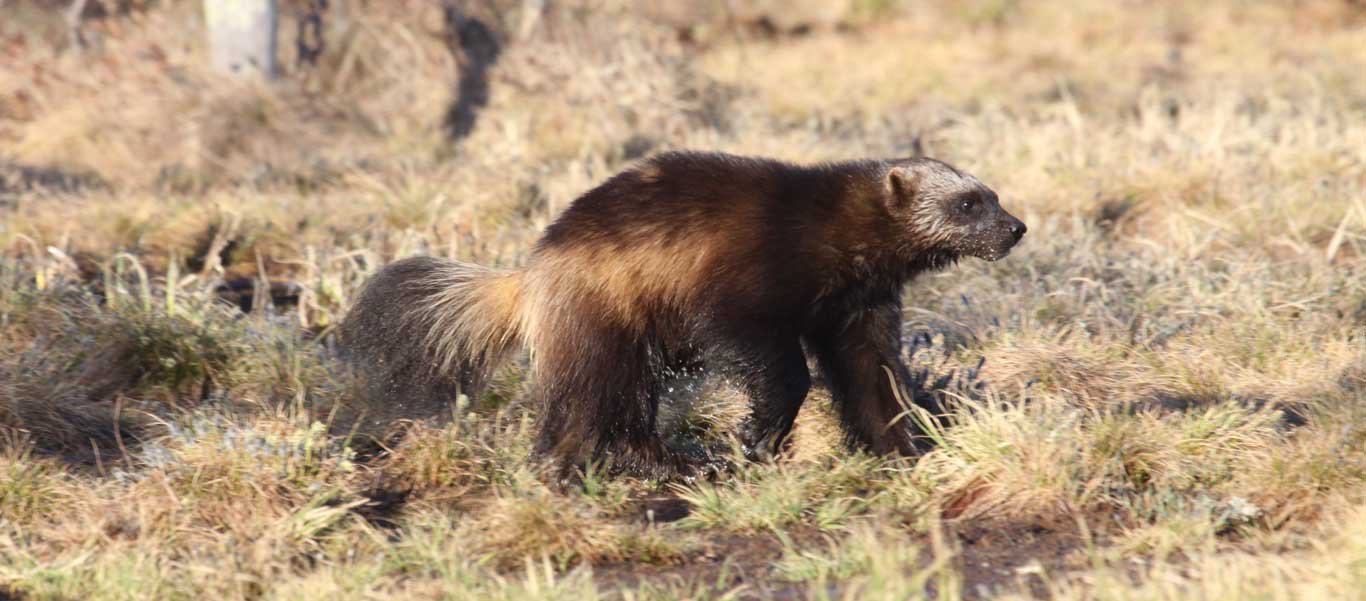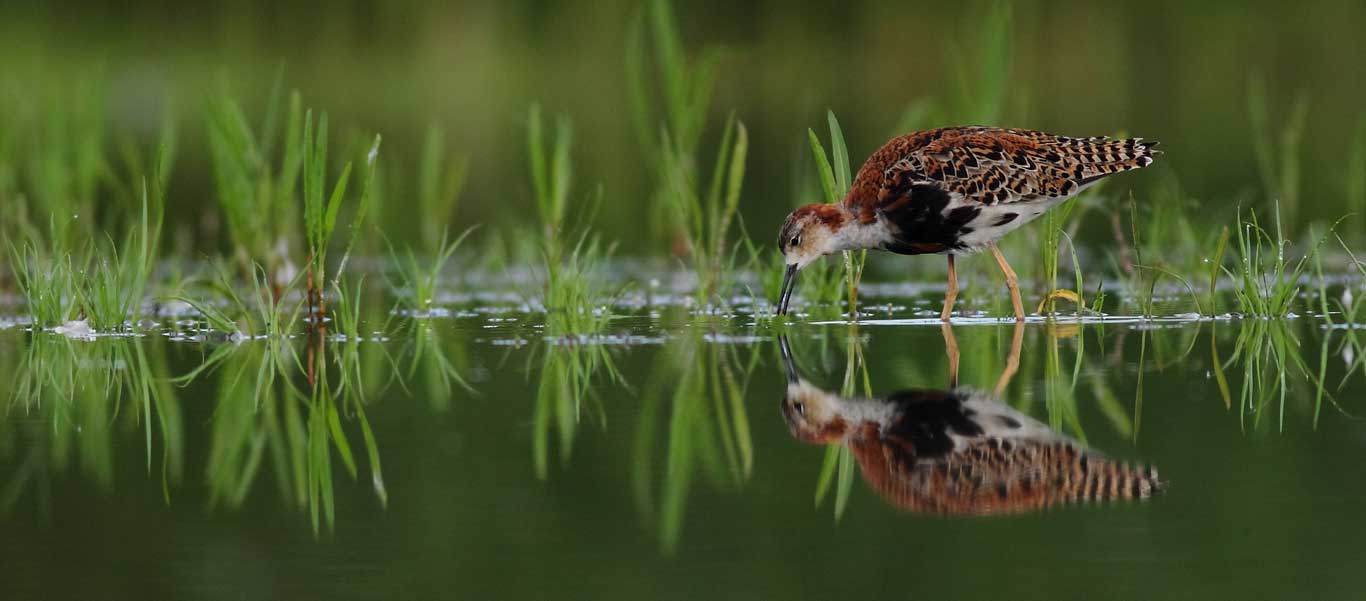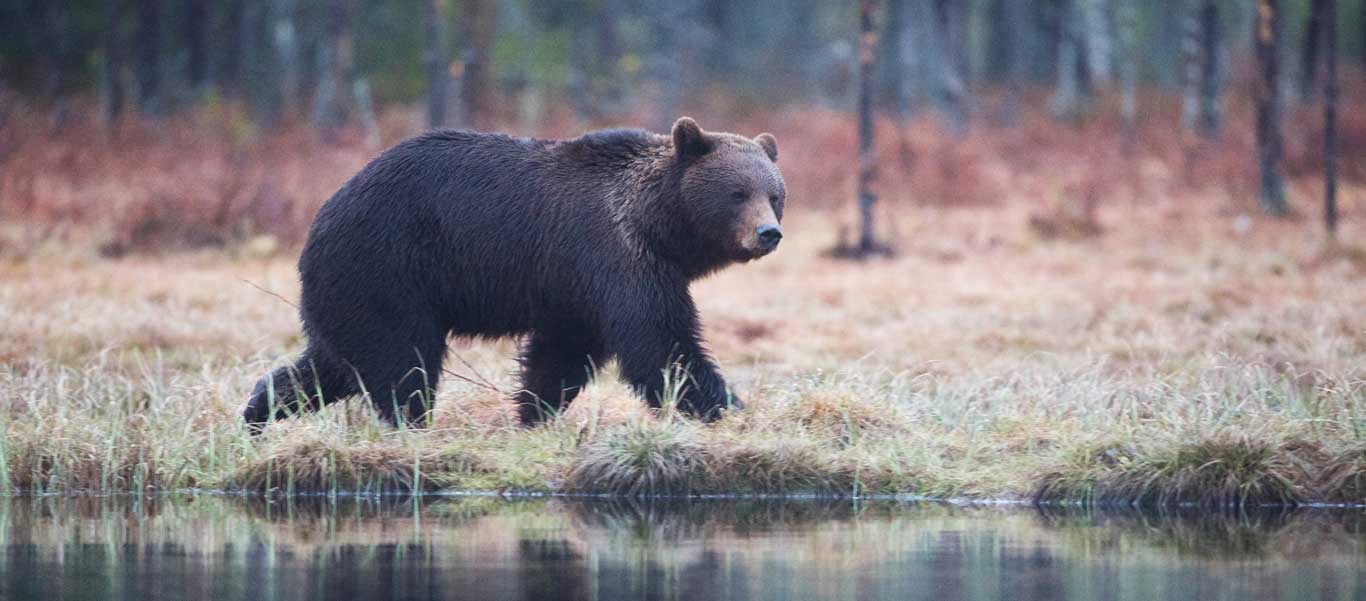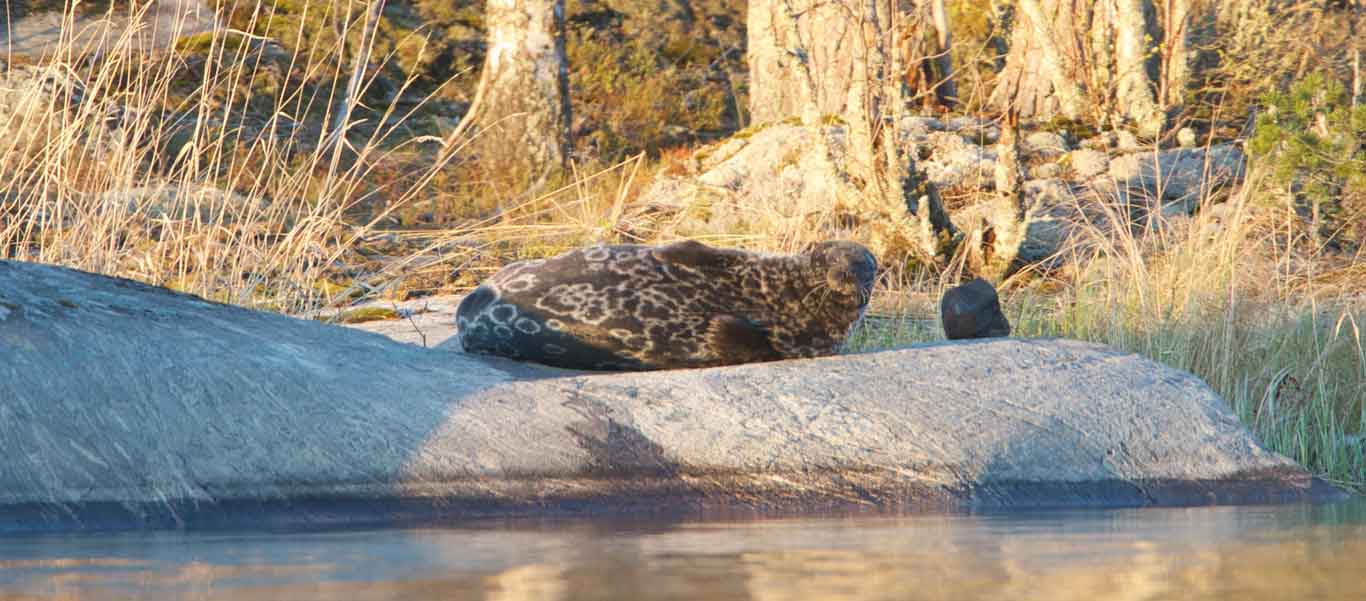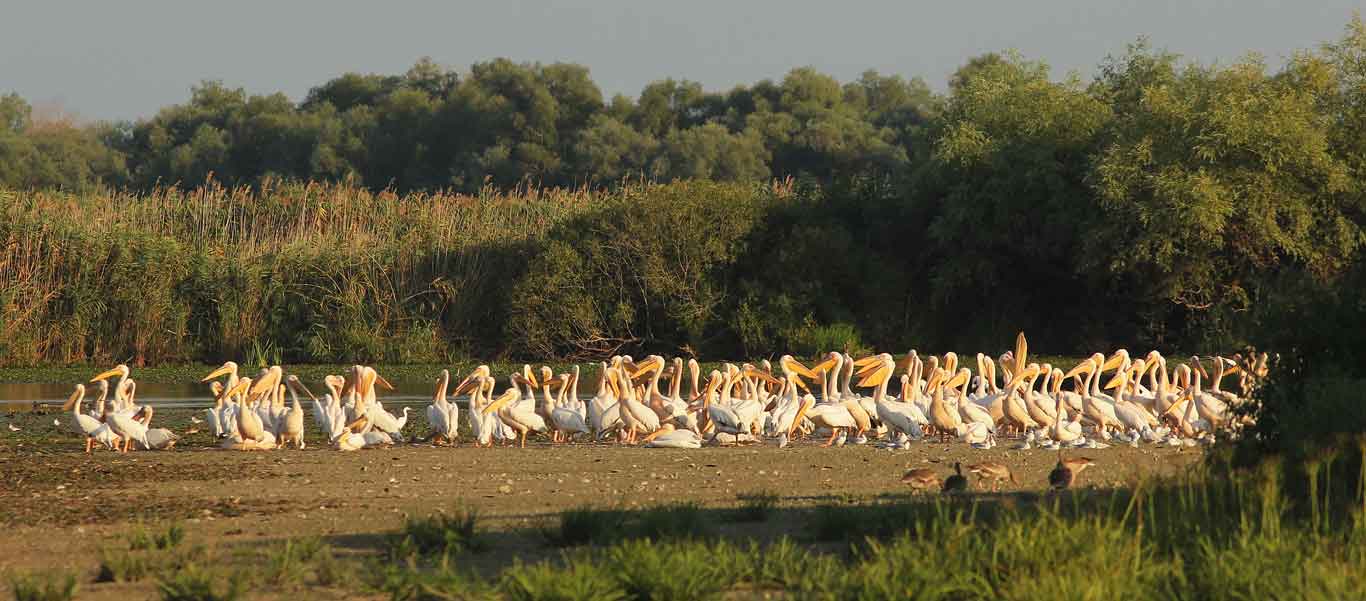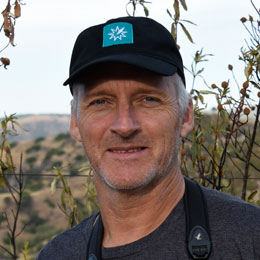Romania & Finland
May 8 – 23, 2026
Romania and Finland Wildlife Tour
Romania and Finland both exist on Europe’s edge, where the more staid influences of the EU meet the passions of Russia and the Balkans. Their cities both buzz with a new embrace of tech and design innovation. And they both possess some of the last pristine wild areas on the continent, with remarkably high concentrations of animals. Birds and bears will be the target of Apex ’s journey through these countries, taking you from swamps to Taiga, river delta to inland sea. See rare freshwater seals, Brown Bears, and Wolverines, and up to 300 species of resident and migratory birds on this 16-day Romania and Finland Wildlife Tour.
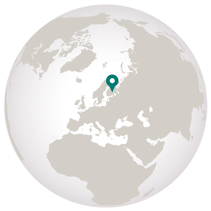
Destinations
- Travel by Air
- Travel by Road
- Travel by Boat
- Travel by Bullet Train
- Travel by Rail
- Travel by Dog Sled
-
Friday, May 8: Arrive Bucharest, Romania
Welcome to Bucharest, the vibrant capital of Romania. With its dynamic blend of historic charm and modern energy, Bucharest is often referred to as the “Little Paris of the East”. You’ll be met at the airport and taken to your hotel for check in. Gather this evening with your expedition leaders and fellow travelers for a welcome dinner and briefing. Dinner and overnight at the Epoque Hotel.
-
Saturday, May 9: Bucharest / Tulcea / Danube Delta
After breakfast at the hotel, drive to Tulcea, the Danube Delta’s main harbor town. Stop en route at lakes and bogs to look for birds, including ever-present bee-eaters and colorful rollers. Arrive in Tulcea this afternoon, and embark the vessel, known locally as a ‘ponton,’ your home for the next four nights on the Danube. Be on deck as the ponton heads to the Central Channel. As we leave civilization behind, the typical Delta bird species start to appear, among them Black-headed Gulls, Caspian Terns, Glossy Ibises, Squacco Herons, Pygmy Cormorants, and noisy Greylag Geese with their distinctive rosy beaks. The riverine trees might hold Black and Grey-headed Woodpeckers. Enjoy dinner and overnight onboard.
-
Sunday – Tuesday, May 10 – 12: Danube Delta
The Delta consists of over 2,000 square miles of lakes, channels, reed beds, and willow stands—ideal breeding habitat for a staggering array of birds. May is the height of the breeding season, so there are sure to be memorable sightings. The route is flexible, depending on bird activity and changing access in the maze of channels. Conditions permitting, visit lakes along the Sontea Channel, where Great and Little Egrets, Grey, Purple, and Squacco Herons, Black-crowned Night Herons, Eurasian Spoonbills, and Great and Pygmy Cormorants are frequently seen as they move between breeding colonies. Specialties include Dalmatian Pelicans and Pallas’s Gulls. Europe’s biggest breeding colony of Great White Pelicans—more than 2,000 pairs—is also found here, and the massive flocks of pelicans flying overhead as they move to the Delta’s lakes to feed is sure to be a highlight of the trip. We will use smaller boats to access the most hidden parts and channels of the Delta. This will allow us to have a more intimate experience with the flora and fauna and close-up views of some of the shy resident species. Spend your final night onboard the ponton moored close to Tulcea.
-
Wednesday, May 13: Tulcea / Vulcan
This morning, disembark the ponton and spend the day traveling to Vulcan, nestled in the foothills of the Carpathian Mountains. En route, stop at the Berca Mud Volcanoes, small volcano-shaped structures typically a few meters high caused by the eruption of mud and natural gases. Enjoy lunch at a local restaurant before continuing to Vulcan. A haven for nature and wildlife enthusiasts, Vulcan is surrounded by pristine forests, towering peaks, and rolling meadows. This area offers an ideal base for exploring the region’s rich biodiversity and breathtaking landscapes. Dinner and overnight at Wolkendorf Hotel.
-
Thursday, May 14: Vulcan
Enjoy a full day exploring the Carpathian Mountains. Start by visiting the Gorges of Zărnești in Piatra Craiului National Park. Follow shepherd trails through the forest looking for bear and deer tracks. Watch for Wall Creepers, Tree Creepers, Alpine Swift, Crag Martins, Serine, crossbills, Black Woodpeckers, White-backed Woodpeckers, and Honey Buzzards. Enjoy a picnic lunch among the old spruce, fir, and beech trees. In the afternoon, search the Stramba Valley forest for more birds and the Eurasian Brown Bear. In the evening visit a hide specifically for viewing the bears while they feed. There are 40–60 bears that live in this valley, protected by The National Forest Administration of Romania. Afterwards, return to Vulcan for dinner and overnight at Wolkendorf Hotel.
-
Friday, May 15: Vulcan / Bucharest
Drive through the countryside back to Bucharest. Arrive in the early afternoon for a guided walking tour of the city’s Old Town, pretty much all that is left of pre-World War II and pre-Communist Bucharest. See the spectacular refurbishment taking place and learn of the multiple “belles époques” the city has experienced. Dinner and overnight at Epoque Hotel.
-
Saturday, May 16: Bucharest / Helsinki, Finland
Depart Bucharest today on a flight to Finland’s quirky harbor-side capital, Helsinki. Upon arrival, head to the Hilton Helsinki for dinner and overnight.
-
Sunday, May 17: Helsinki / Lake Saimaa
After breakfast, drive northeast toward the pristine Finnish Lakeland, with its crystalline waterways, dense forests, and endless skies. Spend the evening on a boat in Finland’s largest lake, Saimaa, looking for the world’s rarest seal—the inland Saimaa Seal. An endemic species of ringed seal, the Saimaa Seal may be the most endangered pinniped on Earth, with less than 300 individuals remaining. May is the best time to see them out of the water, lounging on rocks. You may also see European Beaver and a variety of waterfowl and owls. Dinner and overnight at Nature Hotel & Spa Resort Järvisydän, next to the lake.
-
Monday, May 18: Lake Saimaa / Lentiira
Head further north this morning on a drive toward the western edge of the vast Siberian Taiga. Stopping at the many lakes, swamps, and forests along the way in search of resident wildlife. Turn off the main road and head into the dense forest on the Finnish-Russian border, known for its diversity of fauna and density of large mammals. Check in to the Wild Brown Bear Lodge, keeping watch for Mountain Hare, Red Fox, White-tailed Eagles, Black Woodpecker, Northern Bullfinch, and Ural Owls around the property. After an early dinner head out to observation hides for an overnight stay, for the best chance to view Brown Bears and Wolverines up close. Late May is the height of mating season, so there may even be some performing by male bears if females happen to be in the vicinity. Dinner and overnight at Wild Brown Bear Lodge.
-
Tuesday, May 19: Lentiira
Return to the main lodge this morning to freshen up and have breakfast. You may want to enjoy some time in a local sauna or explore the property on foot. Spend the afternoon in search of rare Flying Squirrels, Moose, beaver, Forest Reindeer, and many birds, including grouse, woodpeckers, and rare tits. This evening you may opt for a second night in the hide for another chance at bears, Wolverines, and even wolves. Meals and overnight at Wild Brown Bear Lodge.
-
Wednesday, May 20: Lentiira / Kuusamo
After breakfast and a chance to freshen up, continue north toward Kuusamo, in search of rare and interesting birds. Target species here include Rustic and Little Bunting, Capercaillie, Red-flanked Bluetail, Siberian Jay, Siberian Tit, and Hazel Hen. Hear the marvelous sounds of displaying Little Gulls in the bogs around town, as well as Spotted Redshank, Ruff, and possibly Jack Snipe. Dinner and overnight at Holiday Club Kuusamon Tropiikki.
-
Thursday, May 21: Kuusamo / Oulu
This morning, head southwest to Oulu, whose city center is spread out on several islands on the Gulf of Bothnia. Oulu is one of Finland’s most pleasant cities, with a thriving student and tech community. It is also the gateway to some of Europe’s best bird watching, as much of the surrounding area is wetlands. The region is best known for its breeding northern owls, but the coastal areas also attract numerous birds. Enjoy dinner and overnight at the Finlandia Hotel Oulu.
-
Friday, May 22: Oulu
Rise early for a full day of bird watching. Northern owls are the focus here, and expert guides have intimate knowledge of nesting sites, giving you the best chance to spot all five of the region’s key species—Great Grey, Ural, Hawk, Tengmalm’s, and Pygmy. Black, Hazel, and Willow Grouse are also present in the area, as well as Three-toed- and Black Woodpeckers. We will also visit Liminka Bay, one of the most significant wetlands in Europe. Mid-May is the prime migration period for waders and one of Europe’s prettiest waders, the Ruff, can often be found feeding and lekking in large groups. Enjoy a farewell dinner this evening and toast to a fabulous adventure. Overnight Finlandia Hotel Oulu.
-
Saturday, May 23: Oulu/ Depart
After breakfast, head to the airport for flights homeward.
Details
- May 8 – 23, 2026
- Leaders Jonathan Rossouw & Gerald Broddelez
- $21,470 Per Person Rate
- $22,740 Solo Rate
- 16 days Trip Length
- 12 guests
- Bucharest Start
- Oulu End
Call us to reserve your spot on this exciting expedition!

